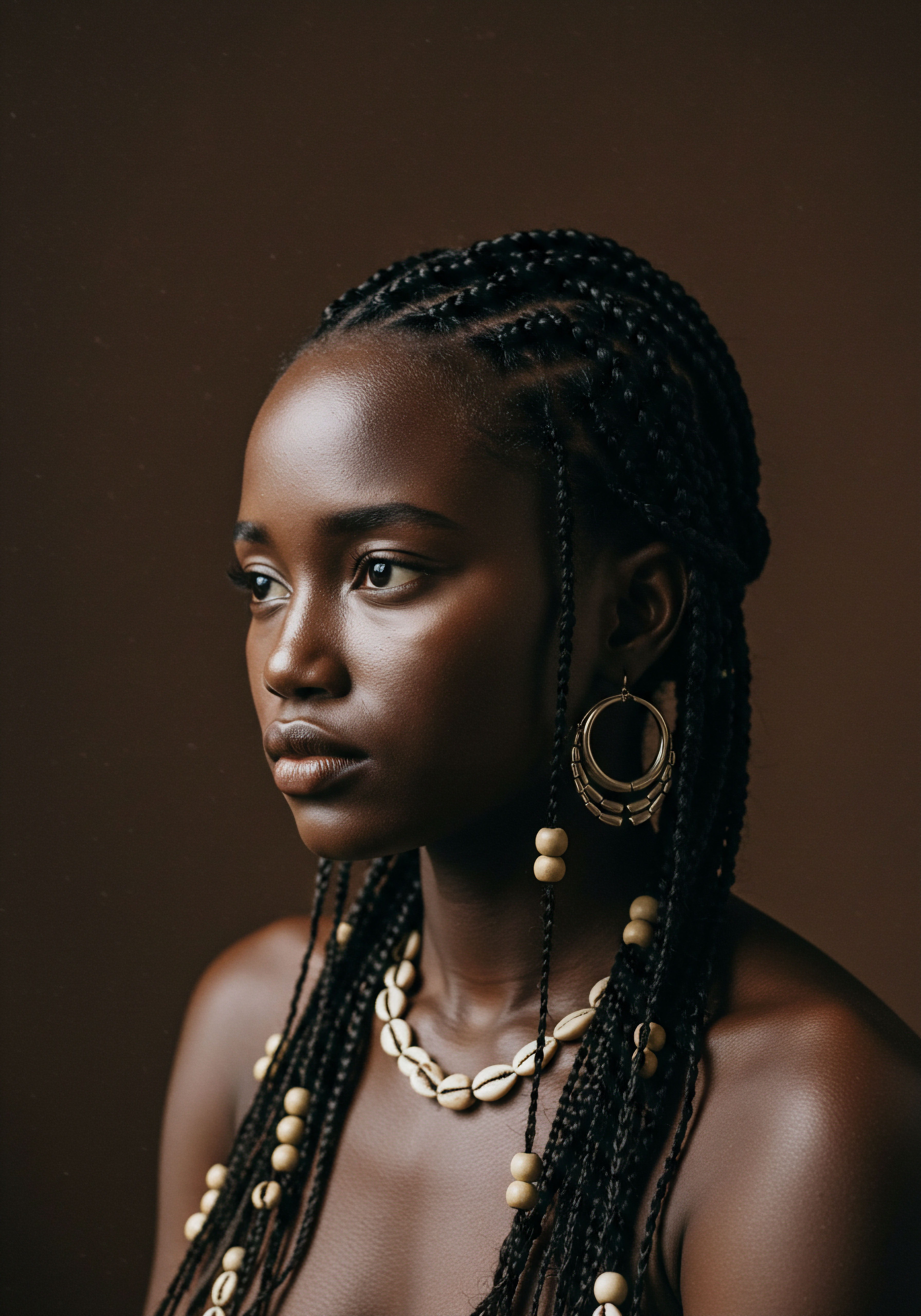
Roots
The quiet moments before slumber, a time when the world stills and the day’s demands recede, have always held a particular significance for personal care. For textured hair, this nocturnal period, seemingly simple, has historically been a canvas for practices that profoundly shaped its well-being and appearance. We might wonder how generations long past, without our contemporary products or scientific understanding, managed to preserve the beauty of their strands.
The answer lies in rituals born of necessity, wisdom, and a deep connection to natural rhythms. These traditions, passed down through whispers and gentle touches, offer a compelling look into the enduring relationship between sleep, hair, and identity across cultures.

Ancient Headrests and Hair Preservation
Consider the ancient Egyptians, a civilization celebrated for its elaborate hairstyles and wigs. Their approach to nighttime hair protection diverged significantly from the soft pillows we know today. Instead, they often relied on rigid headrests, crafted from wood, stone, or ceramic. These headrests, sometimes shaped into animal figures or adorned with hieroglyphs, served a dual purpose ❉ to elevate the head from the ground, potentially deterring insects, and crucially, to maintain intricate coiffures and wigs.
Ancient Egyptian headrests, far from offering plush comfort, were instrumental in preserving elaborate hairstyles through the night.
The use of such unyielding supports suggests a profound value placed on preserving the integrity of their hair. While not directly altering texture in a chemical sense, these headrests minimized friction and compression, two factors that significantly affect textured hair. Textured strands, with their natural coils and curves, are particularly vulnerable to mechanical stress. A rough surface or constant pressure can disrupt the cuticle layer, leading to frizz, tangles, and breakage.
By keeping the hair elevated and relatively undisturbed, these ancient solutions likely contributed to maintaining the smooth appearance and structured styles that were so central to Egyptian aesthetics and social standing. This practice hints at an early, intuitive understanding of hair preservation, even if the underlying trichological principles were not yet articulated.

Early Textiles and Their Subtle Impact
Beyond the headrest, the materials upon which people slept also played a silent yet substantial role. Before the widespread availability of finely woven fabrics, bedding often consisted of rougher materials ❉ straw mats, animal skins, or coarse plant fibers. The friction generated between these surfaces and unprotected hair could have been considerable.
Every turn and shift during sleep would have caused microscopic damage, especially to more delicate or textured hair types. This constant rubbing would have contributed to:
- Cuticle abrasion, leading to a rougher hair surface.
- Increased Tangling and knot formation.
- Loss of natural Moisture, as rough surfaces can wick away hydration.
Over time, such daily friction would have manifested as hair that appeared less smooth, perhaps more prone to frizz, and potentially shorter due to accumulated breakage. This is a subtle yet pervasive influence, one that underscores the cumulative impact of seemingly minor interactions on hair health. The very fabric of one’s sleeping environment held the power to shape the hair’s daily reality.
| Sleep Surface Material Stone/Wood Headrests |
| Potential Hair Impact Minimized friction, preserved intricate styles, reduced tangles. |
| Cultural Context (Example) Ancient Egypt |
| Sleep Surface Material Straw/Rough Plant Fibers |
| Potential Hair Impact Increased friction, potential for tangles and breakage, moisture loss. |
| Cultural Context (Example) Various ancient agrarian societies |
| Sleep Surface Material Animal Skins/Furs |
| Potential Hair Impact Variable friction, potential for oil transfer, warmth. |
| Cultural Context (Example) Early nomadic communities |
| Sleep Surface Material Understanding historical sleeping environments illuminates their silent influence on hair texture. |

Ritual
As the sun dipped below the horizon, ancient communities often turned their attention to the preparations for rest, a time when practicalities blended with intention. The quiet moments before sleep were not merely about closing one’s eyes; they were opportunities for care, for protection, and for maintaining the delicate balance of one’s being. For hair, particularly textured hair, these nightly preparations evolved into specific rituals, methods honed over generations to safeguard strands from the rigors of the night. These practices, though varied across cultures, shared a common thread ❉ a recognition of the night’s potential to alter hair and a proactive stance to mitigate undesirable effects.
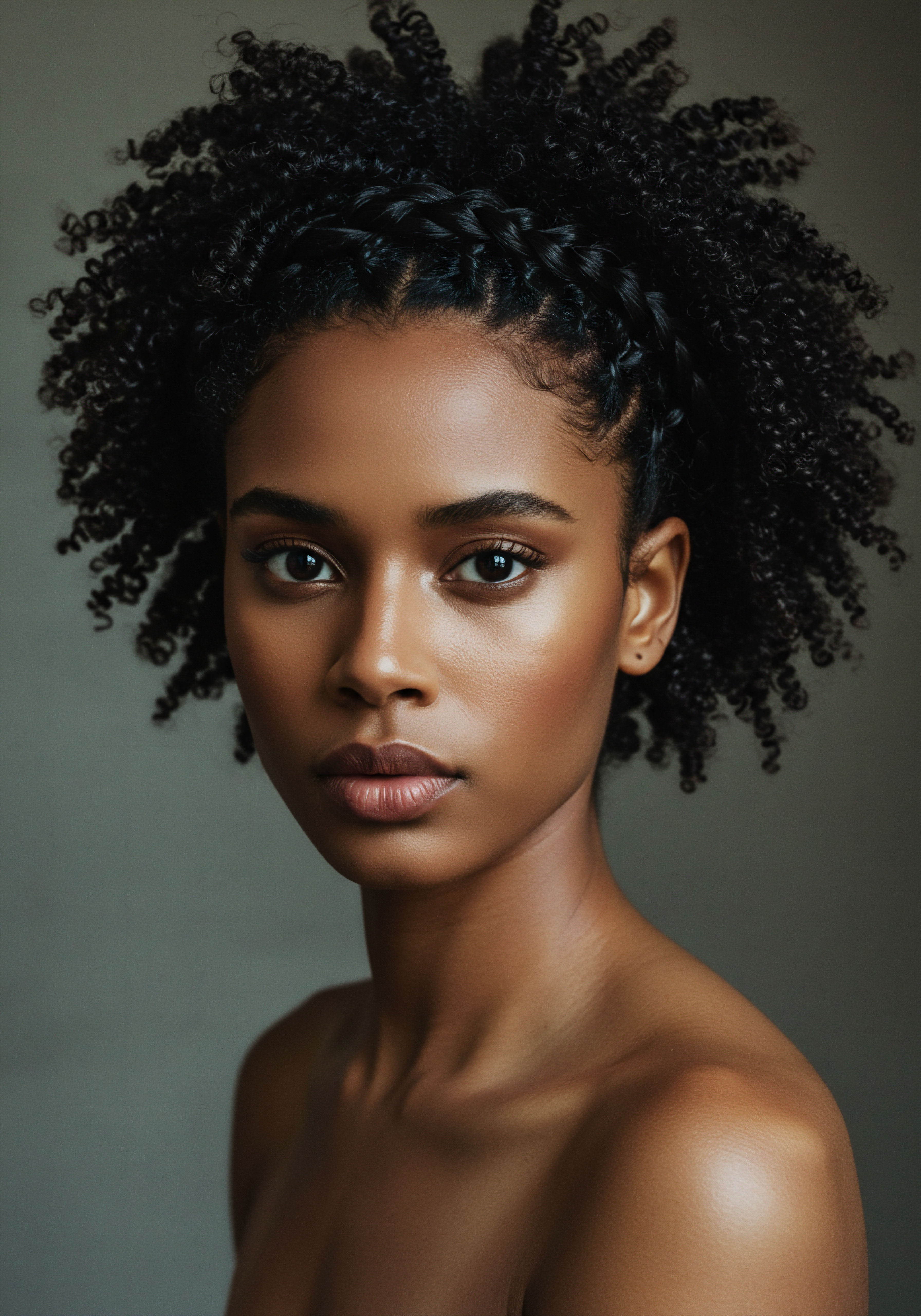
What Did Nighttime Braiding Offer Textured Hair?
Across many cultures, braiding hair before sleep became a common practice, particularly for those with longer or more coiled hair. This simple act offered a multitude of benefits that directly influenced hair texture. By securing the hair in braids, individuals could significantly reduce the friction between their strands and sleeping surfaces.
This reduction in friction was paramount, as it prevented the lifting and abrasion of the hair’s outer cuticle layer, which is especially prone to damage in textured hair. When the cuticle remains smooth, hair retains its natural moisture more effectively, appearing shinier and feeling softer.
Braiding hair before sleep, a practice common across many cultures, offered significant protection against friction and moisture loss.
Beyond friction, braiding also helped to prevent tangles and knots, which are a persistent challenge for textured hair. Loose strands, left to their own devices during sleep, can interlock and form stubborn mats, requiring forceful detangling in the morning that often results in breakage. Braids kept the hair contained, minimizing this mechanical stress. For cultures where long, healthy hair was a sign of beauty or status, such as in various African communities, this practice was not merely a convenience but a cornerstone of hair preservation.
It allowed individuals to wake with their hair largely undisturbed, making morning styling easier and reducing overall hair manipulation. The result was often hair that appeared more cohesive, with defined patterns, and a reduced incidence of breakage over time.

How Did Head Wraps and Bonnets Shield Strands?
Another prevalent nighttime ritual involved covering the hair with wraps, scarves, or bonnets. From the elaborate head ties of African women to the simpler nightcaps worn in European societies, these coverings served as a protective barrier. In African cultures, head wraps, often made from cotton or other natural fibers, were used to protect hair from dust and dirt during daily activities, and also during sleep to protect hair from drying out when cotton pillowcases were used. This practice was particularly relevant for textured hair, which is naturally drier and more susceptible to moisture loss.
The material of these coverings was a silent agent in their effectiveness. While many early wraps were cotton, the introduction and eventual availability of smoother fabrics, such as silk, brought enhanced benefits. Silk, with its smooth surface, creates less friction against the hair cuticle compared to coarser materials. A study published in the Journal of The Textile Institute (El-Messiry et al.
2017) highlighted how certain textiles, particularly polyester, can generate electrostatic charges through friction, which can further disturb the hair cuticle. While this study is modern, it illuminates the physical principles at play in historical contexts. The smooth surface of silk or satin, even if not fully understood scientifically at the time, would have intuitively offered a superior shield, minimizing static and mechanical damage.
These head coverings not only protected hair from friction but also aided in moisture retention. By enclosing the hair, they created a micro-environment that helped to keep natural oils and any applied treatments closer to the hair shaft, preventing rapid evaporation. This was especially beneficial for hair prone to dryness, allowing strands to remain hydrated and supple overnight. The historical adoption of these coverings, whether for warmth, modesty, or hair preservation, speaks to a deep, practical understanding of hair’s needs during rest.
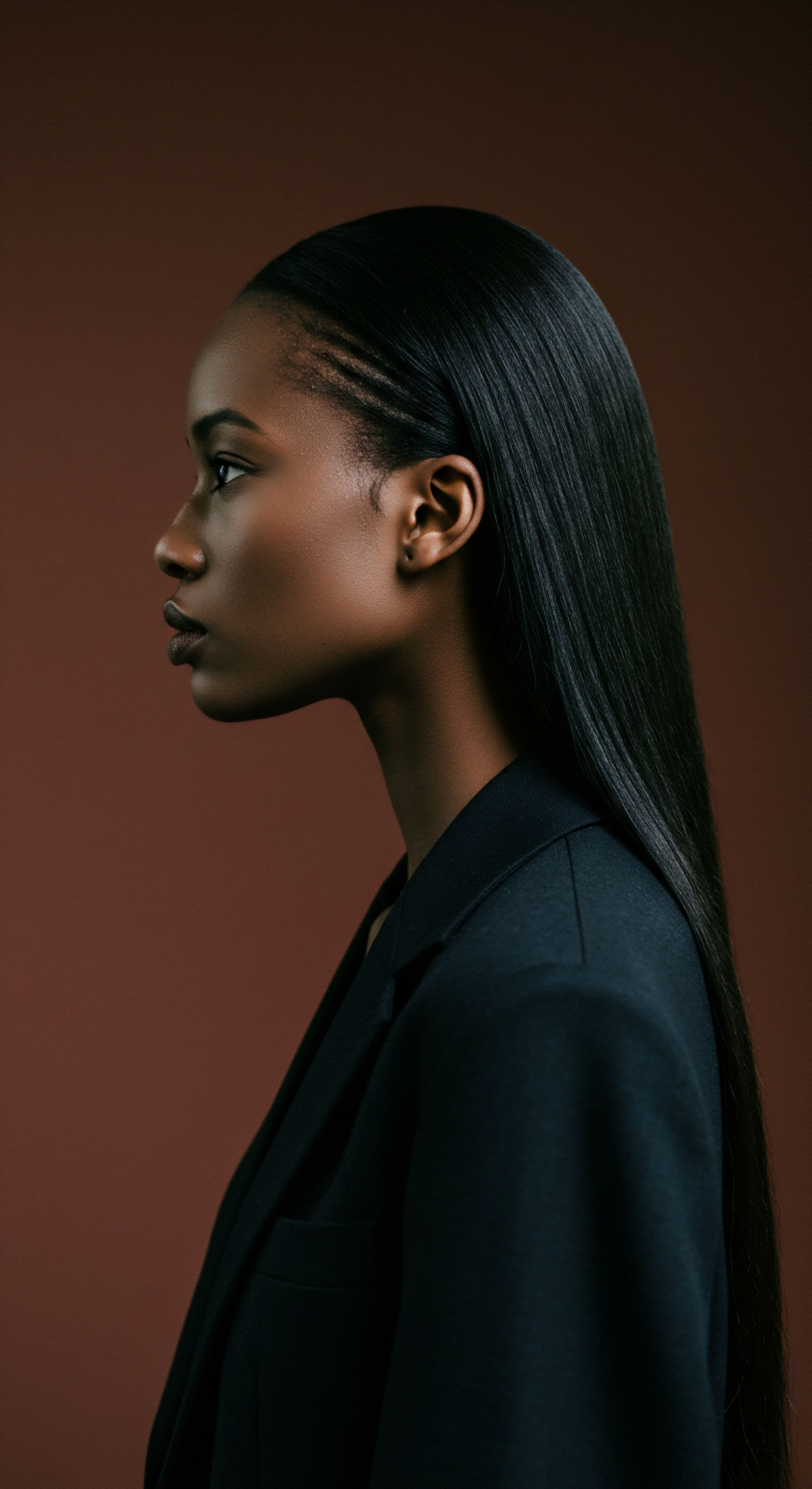
Relay
The echoes of ancient sleep practices reverberate through our contemporary understanding of hair science. What began as intuitive acts of protection, driven by observation and necessity, now finds grounding in the very principles of trichology. The seemingly simple acts of braiding or covering hair before bed, once passed down through generations, reveal a profound, if unarticulated, grasp of hair’s structural vulnerabilities. To truly appreciate how historical sleep rituals influenced hair texture, we must bridge the wisdom of the past with the insights of modern scientific inquiry.

How Does Hair Friction Impact Texture?
At the heart of many historical sleep rituals lies the mitigation of friction. Hair, especially textured hair, is highly susceptible to mechanical damage from rubbing against rough surfaces. The outer layer of each hair strand, the cuticle, comprises overlapping scales. When hair encounters friction, these scales can lift, chip, or even break away, leaving the inner cortex exposed and vulnerable.
This disruption manifests visibly as frizz, dullness, and a loss of definition in textured patterns. Over time, consistent friction leads to breakage, diminishing length and overall hair health.
Consider the common historical bedding materials. Before the advent of soft, finely woven fabrics, sleeping surfaces were often rougher. A study by Shafik (1993) on the effect of different textile fabrics on hair growth in dogs offers a compelling, albeit non-human, illustration of this principle. The study found that polyester-covered skin showed significantly lower hair growth rate and density compared to uncovered areas or those covered with cotton or wool.
Microscopically, the polyester-covered skin exhibited thinning of the epidermis and fragmentation of hair follicle pulp. The researchers posited that the friction between polyester and skin generated electrostatic potentials, creating an ‘electrostatic field’ that inhibited hair growth. While dogs’ hair and human hair, particularly textured hair, differ, this research underscores the potential for certain materials and the friction they generate to physically impact hair follicles and strands at a microscopic level, leading to observable changes in hair health and appearance.
This historical reality meant that unprotected hair, constantly rubbing against coarse bedding, would have experienced chronic cuticle damage. The result would be hair that felt rougher, tangled more easily, and appeared less vibrant than hair protected by deliberate rituals. The traditional African practice of wrapping hair in head ties, often made from materials that, while not always silk, provided a layer of separation from rough sleeping surfaces, directly addressed this issue. These wraps acted as a barrier, minimizing the mechanical stress that leads to cuticle damage and moisture loss, thereby preserving the hair’s natural texture and integrity.

What Was the Role of Moisture Retention?
Moisture is the lifeblood of healthy hair, particularly for textured strands, which tend to be drier due to the winding path natural oils must travel down the hair shaft. Historical sleep rituals often incorporated methods to seal in and preserve this vital moisture. The practice of oiling the hair and scalp before bed, prevalent in many ancient cultures, including Indian Ayurvedic traditions and Egyptian beauty routines, serves as a prime example. Oils like coconut, olive, castor, or even indigenous plant extracts were massaged into the hair and scalp, creating a protective barrier.
This oil application, when combined with protective styles like braids or coverings like bonnets, created a sealed environment that slowed down moisture evaporation. This allowed the hair to remain hydrated throughout the night, reducing dryness and preventing the cuticle from becoming brittle and prone to breakage. The effects on hair texture were significant:
- Reduced dryness and frizz, promoting a smoother, more defined texture.
- Increased elasticity, making hair less susceptible to breakage from manipulation.
- Enhanced natural shine, as hydrated cuticles reflect light more effectively.
In the book The Science of Black Hair by Audrey Davis-Sivasothy, a comprehensive guide to textured hair care, the author emphasizes the critical balance between protein and moisture for maintaining healthy hair and preventing breakage. While this is a modern scientific concept, the historical rituals of oiling and covering hair at night implicitly supported this balance by prioritizing moisture retention. The wisdom of these practices, passed down through generations, intuitively understood the fundamental needs of textured hair long before microscopes revealed the secrets of the cuticle or chemical analysis broke down the components of natural oils. These nightly acts were not merely about aesthetics; they were about safeguarding the hair’s very structure and ensuring its resilience against the dehydrating effects of the sleeping environment.
| Practice Nighttime Braiding |
| Mechanism of Action Reduces friction, prevents tangles, maintains style. |
| Observed Hair Benefit Minimized breakage, maintained curl pattern, reduced frizz. |
| Practice Head Wrapping/Bonnets |
| Mechanism of Action Creates a protective barrier, reduces friction, retains moisture. |
| Observed Hair Benefit Reduced frizz, increased hydration, preserved style. |
| Practice Pre-sleep Oiling |
| Mechanism of Action Seals in moisture, lubricates strands, nourishes scalp. |
| Observed Hair Benefit Softer texture, increased elasticity, improved shine. |
| Practice Rigid Headrests |
| Mechanism of Action Elevates hair, prevents compression and friction on specific styles. |
| Observed Hair Benefit Preserved elaborate styles, minimized disturbance. |
| Practice Historical rituals demonstrate an intuitive understanding of hair protection and maintenance. |
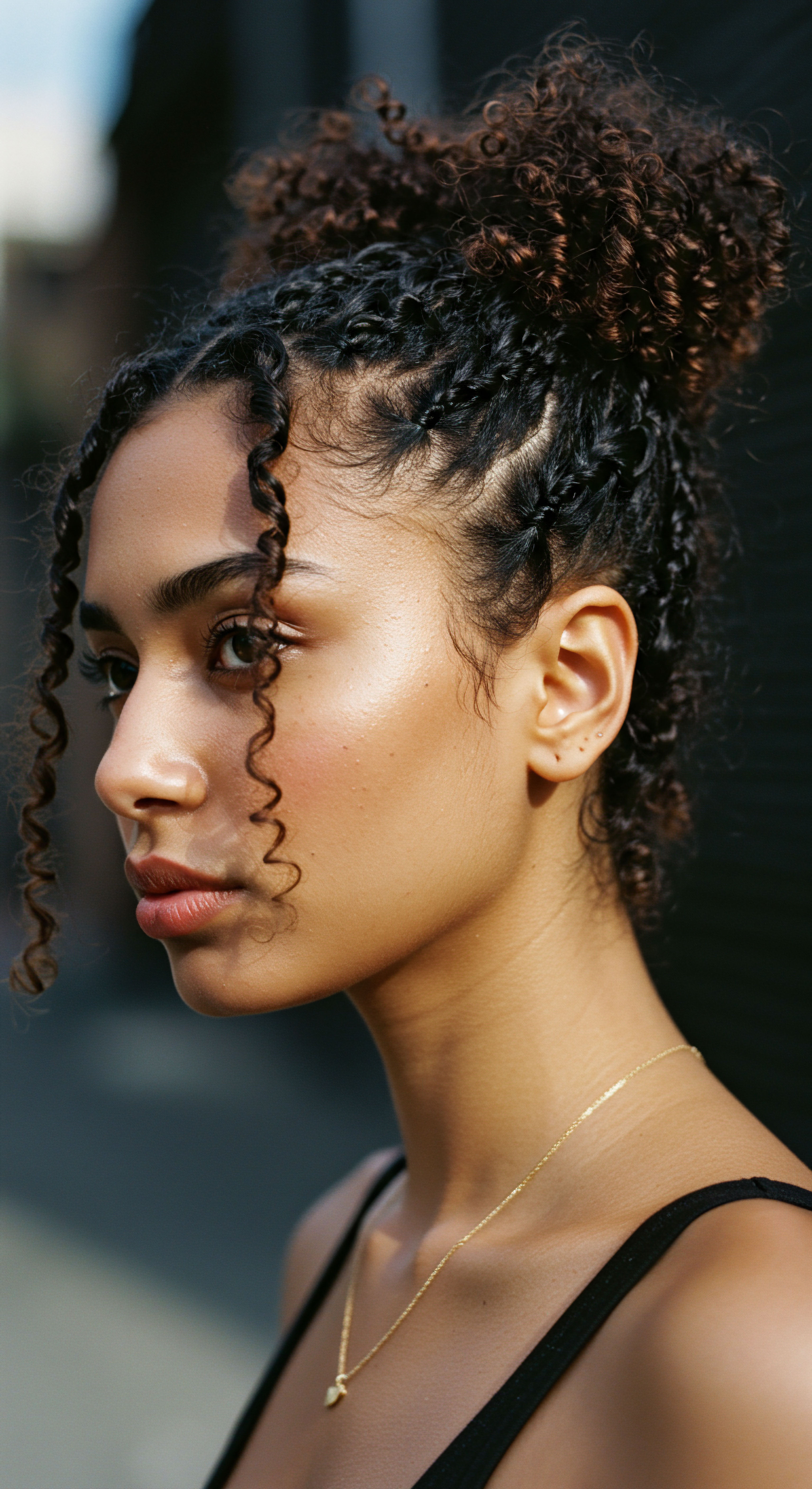
Cultural Continuity and Modern Application
The influence of historical sleep rituals on hair texture extends beyond their immediate physical effects. They represent a powerful lineage of knowledge, a testament to the ingenuity of past generations in caring for their hair with the resources available. Today, these practices find contemporary expression in the textured hair community. Satin or silk bonnets and pillowcases, modern iterations of ancient head coverings, are widely recommended to reduce friction and retain moisture, directly addressing the same challenges faced by our ancestors.
The resurgence of protective styling, such as braids, twists, and buns worn overnight, also mirrors historical approaches to minimizing manipulation and preserving hair integrity. These modern adaptations, while benefiting from advancements in material science and product formulation, draw directly from the wellspring of ancestral wisdom. They underscore a continuity of care, where the understanding of hair’s needs transcends time and technological progress. The enduring popularity of these methods is not just a trend; it is a reaffirmation of practices that have proven their worth over centuries, safeguarding hair texture through the quiet hours of sleep.
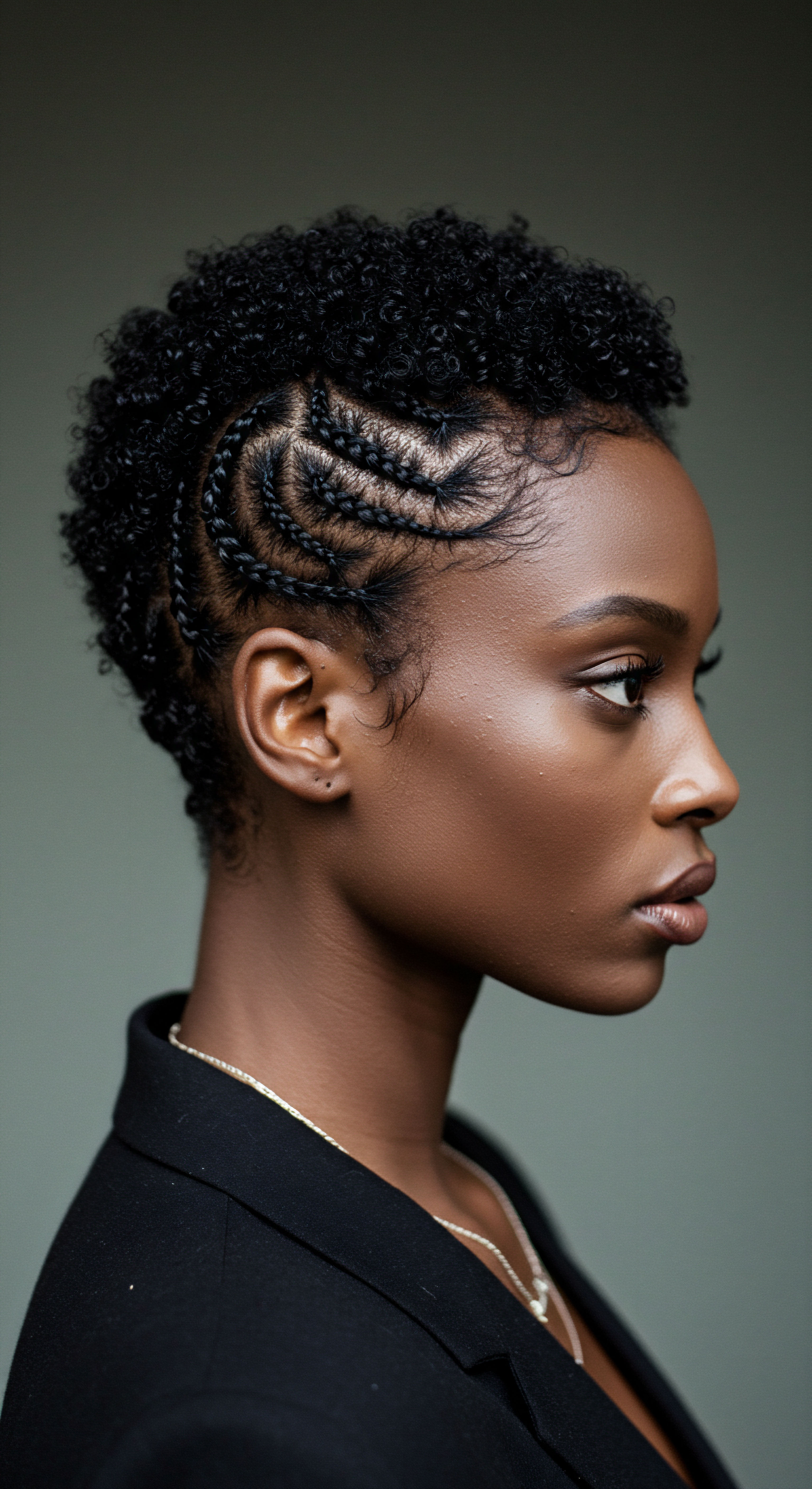
Reflection
As we close our eyes each night, the quiet acts of hair care we perform connect us to a long line of individuals who, across continents and centuries, also sought to protect their crowning glory during slumber. The delicate dance between rest and hair preservation, shaped by materials, cultural beliefs, and a profound understanding of natural properties, continues to inform our routines. There is a gentle wisdom in these historical sleep rituals, a quiet affirmation that the health and appearance of our hair are not merely outcomes of products, but reflections of consistent, intentional care. The stories held within each strand, from ancient braids to modern bonnets, speak of resilience, ingenuity, and a timeless appreciation for the beauty of hair in all its varied textures.
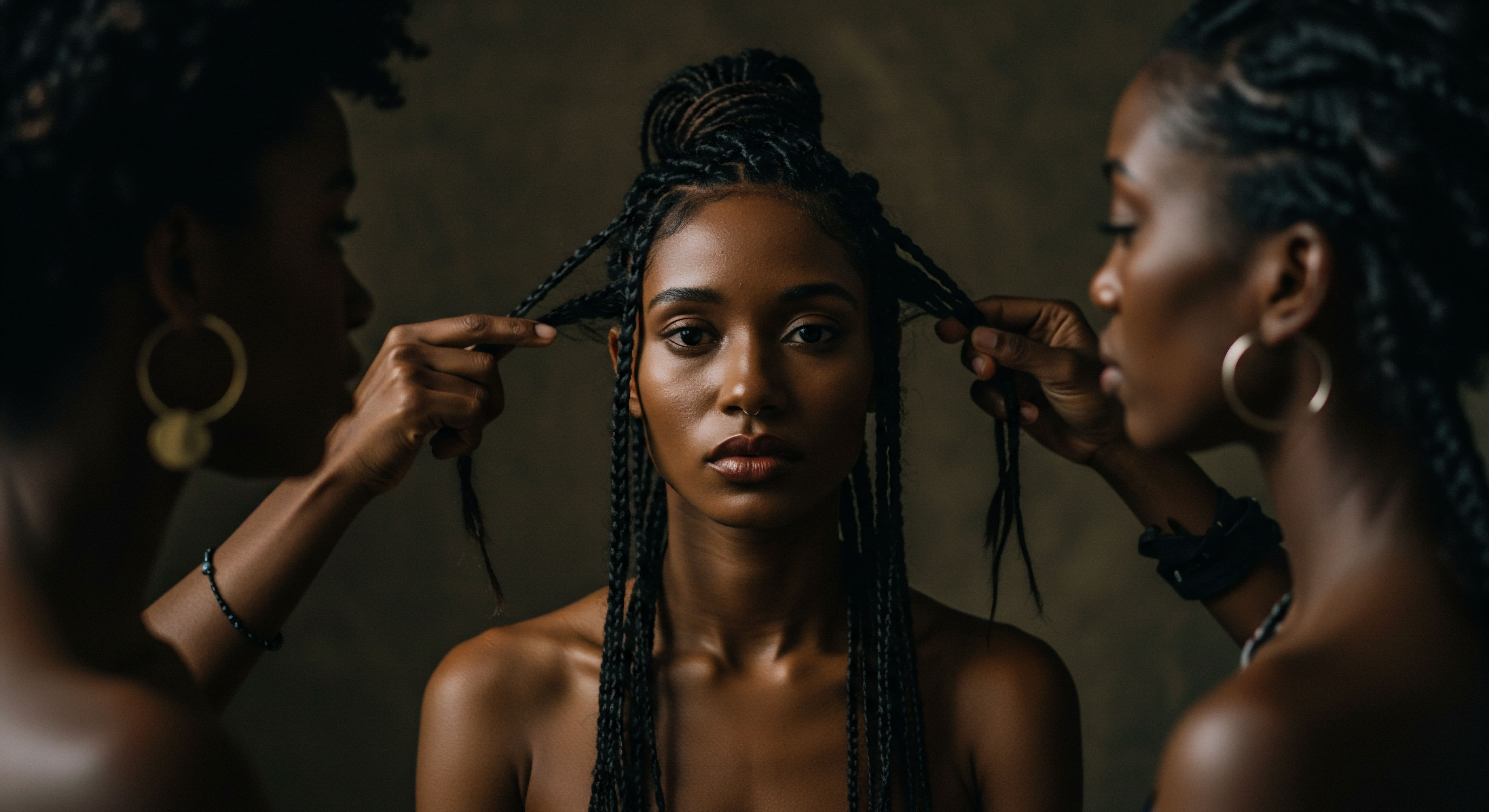
References
- Byrd, Ayana D. and Lori L. Tharps. Hair Story ❉ Untangling the Roots of Black Hair in America. St. Martin’s Press, 2001.
- Davis-Sivasothy, Audrey. The Science of Black Hair ❉ A Comprehensive Guide to Textured Hair Care. Sivasothy Hair, 2011.
- El-Messiry, M. et al. “Electric Static Charge Generated from the Sliding of Head Scarf Textiles against Skin and Hair.” The Journal of The Textile Institute, vol. 108, no. 4, 2017, pp. 578–585.
- Matthews, Mimi. “The Beauty Rituals of 19th Century Empress Elisabeth of Austria.” Mimi Matthews, 5 Oct. 2015.
- Shafik, A. “Polyester but not cotton or wool textiles inhibit hair growth.” Dermatology, vol. 187, no. 4, 1993, pp. 239-42.
- Wilderness Safaris. “The history & meaning of head wraps across Africa.” Wilderness Safaris, 25 Jan. 2015.